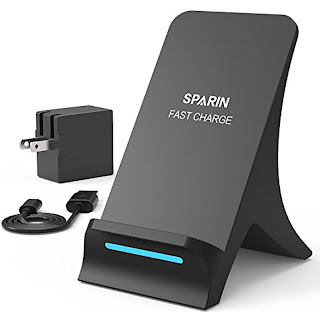 |
| Simple Decals. |
When I read through threads on online forums I see many posts about faded and cracked decals. In fact, my 1991 Aero Cruiser has a 4" straight decal going most of the way around the belt-line with two smaller ones above and below. The bigger center one (especially in front) looks awful and I have been wanting to replace it...and perhaps add some unique touches in various places. After
shining up the fiberglass gelcoat using an acrylic floor finish they look even worse than before. Add that to several harsh winters and sun exposure and you have a recipe for a much needed restoration. The trick is how do you get it done?
 |
| Simple 3 Color Blue Striping For The Sides. |
The
company that built my RV, Gardner Pacific, has been out of business for many years at this point, so NOS (New, Old Stock) decals would be tough to source. Besides, they'd likely be dried out and useless from age. I'm pretty lucky, since the bulk of the decals on my rig are simple stripes. Buy (or cut) a roll of decal material the correct size and apply. After proper removal and cleaning of the old stuff of course! For some of the other decals, they have to be custom cut. Well, I now know how to do this at home. A couple of years ago, I was tasked with striping up one of my work cars. I had NEVER done anything like that before so I did what I always do...RESEARCH! After a lot of learning I found that you could purchase a cutting machine that would cut out custom decals (including text) using all types of vinyl decal material. Including reflective. Add a little software and some basic computer art skills (which I really didn't (don't) have) and it was pretty easy to get them done.
 |
| My 36" Wide Decal Cutter |
Much of the learning curve was trial and error (mostly error) figuring out the pressure and speed needed for the cutting machine to cut through each type of vinyl all the way through, without cutting through the backing, which was difficult. Once you "get it" it's easy to change materials and get them all right. Hint...Write Down your settings for different materials so you can go back and cut more. The software let's you pick fonts and type text easily. Using artwork was a bit tougher. You can import various pieces of art, but most of the time, they will need to be VECTOR Rather than RASTER formats. This really just means photos won't work. The art has to be in a computer readable format that describes the curves and outlines. There are programs out there that will convert from a photo or scan to VECTOR artwork, but they are finicky and require "tweaking" most of the time. You can always draw the artwork on the computer screen (the software helps with curves and "swooshes") which makes basic RV-style side graphics pretty easy.
 |
| Screen Photo Of Vinyl Cutting Software |
I had to make an "Aero Cruiser" text graphic because I didn't have a font that looked close, since the best version of the graphic is black on an off-white background (Rear of my RV). I took a good picture and used software to convert it to VECTOR, then zoomed in and fixed the small errors. The best part, when it's VECTOR you can re-size as much as you want without losing any quality. The same graphic is used on my RV multiple times in various sizes. The color of your decals is dependent on the color of the vinyl material you are cutting from. It comes in MANY colors and patterns. The cutter will only cut one color at a time since it's material based, so when you are trying to re-create a multi-color decal, you create it in many colors and have the software separate them for cutting. Once cut out, you reassemble them when applied to the RV.
 |
| Partially Weeded Decal (The "P" Isn't) |
After the decal comes off the machine, you need to "weed" it. That just means taking all the stuff that's NOT your graphic off the backing before you can apply. If you do that carefully, you can have a nice stencil to paint with or use as a reverse (white or body color) outline decal. I never was able to remove it that cleanly...better luck next time for me! Once it's weeded, you can apply a tacky (not really all that sticky) transfer paper to the FRONT side. Now you carefully remove the paper backing to expose the REALLY sticky adhesive on the vinyl. Depending on the type of vinyl you bought, you can use the "wet method" to apply. You just spray (from a misting spray bottle) a small amount of water to the adhesive side, place the decal, adjust then squeegee out any air/water underneath. Then leave it alone to dry. This works best when it's warm out (above 60 F). The vinyl I have doesn't like being applied wet, so I only get one chance to get it in the correct spot and stuck down. Make sure it's LEVEL!! Once done, rub the decal down to make sure it stays down. Believe me, the adhesive is STRONG! I messed up a lot of them getting this correct.
Those are the basics. With some research you can find everything you need online and make your own. Depending on the size of the machine you buy, figure between $150 and $300 for everything you need. Granted, it isn't the easiest thing to do, but it's on par with scrapbooking. Cricut folks will have no problems coming up to speed. I never thought I would learn how to do this...but necessity is the mother of invention!
Be Seeing You...Down The Road,
Rich "
The Wanderman"
www.thewanderman.com




